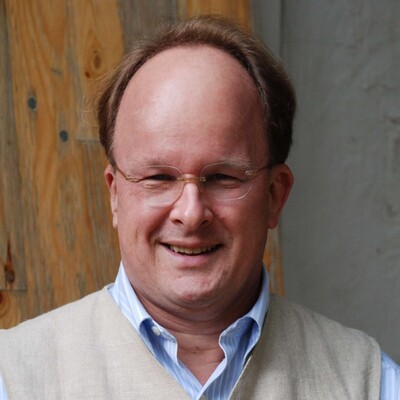Reflections on Downtown Chicago
What can the rest of the United States learn from Chicago’s institutions of higher education?
December 31, 2010
Walking through downtown Chicago, a bit away from any of the new and shining skyscrapers, gave me a sudden sense of being in Shanghai. Somewhat sodden, somewhat shabby urban architecture well past its prime — but, in its ruggedness and oldness, charming in itself.
I approached some massive building that was hard to comprehend as to what it was. The massive structure on South State and East Van Buren streets was a large city block long. Was it an oversized concert hall perhaps, a Carnegie Hall put on steroids?
But then, there were the large, flailing wingtip metal structures up top, which reminded me of German war memorials of the glory days of 1870. Was that perhaps a hint, or tribute, to upstanding Chicago citizens of German origin having financed the venture, whatever its actual purpose, over a century ago?
As I came closer, still no telltale sign or banner described the building's purpose. I was convinced I was walking toward the former city armory, the place where citizens — and the city — used to keep the weapons to defeat an insurgency, uprising or invasion.
I was stunned to learn, when finally close enough, that I had been taken in by the radiating charms of none other than the Chicago Public Library. Completed in 1873, from the outside at least, it had the aura of an impenetrable- and intimidating-looking fortress of thought.
As I walked further through the neighborhood, I saw an abundance of universities in that downtown area, side by side, occupying large office tower after office tower.
A friend explained that the 24 institutions combined in that centrally located area of Chicago's South Loop have a combined 65,000 students under their tutelage. And he went on to say that the universities were even taking over the space of now-defunct department stores, thus ensuring that “downtown” remained vibrant.
That seems like a dream, conspicuous consumption being replaced by temples of learning. Move over, shopping, here comes learning. The hollowing out of the downtowns, thanks to Wal-Mart and Amazon.com, may have a benefit after all.
It was even a case of concentrated urban living, as close by I saw apartment building towers advertising rental space for students.
It all seemed like such an Olympian paradise, the requisite Starbucks on the ground floor of many a university building included, and Subway sandwich shops next door.
Better yet, it’s all very close to Chicago's Magnificent Mile on Michigan Avenue, the stately street running close by the lakefront, with the large Millennium Park and the Art Institute next to it. I had visions of seminars being conducted in the open air in less wintry times, chatting about Aristotle, online privacy or geoengineering on the lawn.
But then, another, more somber thought took hold of me. Weren’t all these universities private enterprises — and hence, no matter their real or perceived brilliance, potentially very costly affairs for many students?
Weren’t these students, in fact, consumers of education, the charges for which might end up on credit cards?
So what? Hasn’t it always been like that — you invest in your future, earn a handsome return on the investment and it therefore all pays off?
That, at least, is the theory. I am wondering more and more, though, whether American students, compared to their counterparts in other developed and even emerging nations, aren’t facing a painful double whammy.
First, they incur sizable student debt, $24,000 on average for each student who attends college. That doesn’t sound too dramatic — unless there is no job at the end of the education rainbow.
Then, in addition to being jobless, one starts out professional life with a mountain of debt, one hard to pay down — and one, by the way, nobody can run away from by declaring personal bankruptcy, thanks to the U.S. Congress.
That stands in stark contrast to virtually all other forms of private debt in the United States, from which one can, in the end, escape via the unpleasant, but at times effective, option of bankruptcy.
What then is the aforementioned double-whammy? It's the absence of extensive and dependable systems of public transportation. While Chicago-area students are relatively lucky on this account, the same is not true for many youngsters living in other U.S. urban areas.
With public transportation systems weak or insufficient (never mind slated for cutbacks in the current budgetary environment), young Americans — in contrast to their counterparts in many other countries — will need to invest in a set of “wheels” if they want to be mobile.
That further adds to their spending requirements, at a time when the expected disposable income for many young people entering their working lives in the Western world is expected to be very constrained in the first place.
That is not just a function of the current dearth of jobs, or debt repayment obligations, but also a consequence of a secular trend of a leveling out of income levels, with those for many in developed countries stagnating, or declining, as was witnessed in the United States rather acutely over the past 30 years already.
Somber thoughts from a walk in a wintry downtown Chicago, despite brilliant blue skies.
Takeaways
Are American youngsters, compared to their counterparts in other developed and even emerging nations, facing a painful double whammy?
In addition to being jobless, one starts out professional life with a mountain of debt, one hard to pay down — and one from which nobody can run away by declaring personal bankruptcy.
The 24 institutions combined in the centrally located area of Chicago's South Loop have a combined 65,000 students under their tutelage.
Read previous
The Globalist’s Top Ten Quotes of 2010
December 29, 2010
